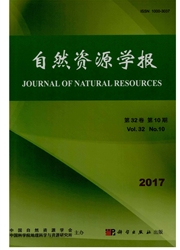

 中文摘要:
中文摘要:
China-Japan-Korea (CJK ) 的经济是补足的,与他们导致有关于贸易的互相依赖的高度的三个乡村的最近。当前,在这些乡村之中的贸易主要依靠以港口为中心的发货。发货网络的发展为 CJK 贸易的深入的集成是不可分的。这份报纸分析用复杂网络分析的方法装运网络的 CJK 的全面特征,中心性,空间结构,和危险,堵住中心端口的流动理论,和打断和删除。主要调查结果如下:1 ) 装运网络的 CJK 有小平均路径长度和聚类的系数,并且它的度分发跟随幂定律分布,它使网络成为 Barab 的现在的明显的特征
 英文摘要:
英文摘要:
The economies of China-Japan-Korea (CJK) are complementary, with their proximity resulting in the three countries having a high degree of interdependence with respect to trade. Currently, trade among these countries relies mainly on port-centered shipping. The development of the shipping network is integral for in-depth integration of CJK trade. This paper analyzes the overall characteristics, centrality, spatial structure, and vulnerability of the CJK shipping network using the methods of complex network analysis, blocking flow theory, and interruption and deletion of hub ports. The main findings are as follows: 1) The CJK shipping network has a small average path length and clustering coefficient, and its degree distribution follows a power-law distribution, which make the network present obvious characteristics of a Barabasi-Albert scale-free. 2) The characteristics of the multi-center point of the CJK shipping network can alleviate traffic pressure. At the same time, the network shows a clear hierarchy in the port transportation system, with cargo transport relying mainly on the ‘hub port-hub port' connection. 3) The CJK shipping network is relatively stable. Compared with ports in Japan and Korea, the main hub ports in China have a greater impact on the stability of the shipping network, in particular those ports of the central coastal region, including Shanghai, Ningbo, and Lianyungang.
 同期刊论文项目
同期刊论文项目
 同项目期刊论文
同项目期刊论文
 期刊信息
期刊信息
